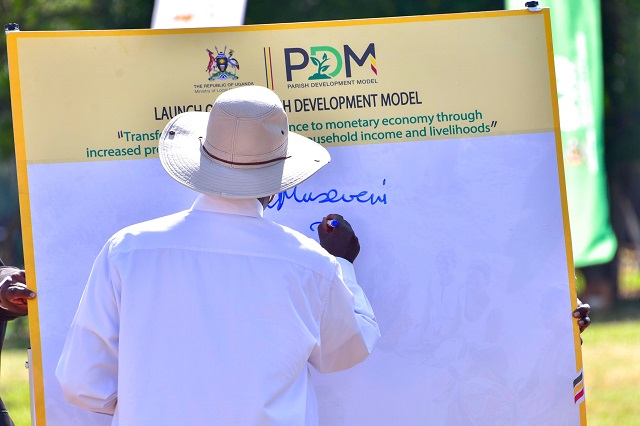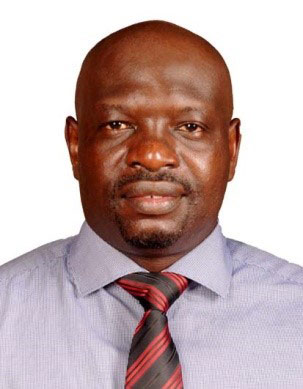
COMMENT | OSCORD MARK OTILE | The launch of Parish Development Model (PDM) has set in motion series of activities aimed at increasing household incomes, improving quality of lives and propelling the proportion of Ugandan households still trapped in the subsistence economy into the money economy.
Similar interventions such as Poverty Eradication Action Plan, Entandiikwa, Prosperity for All, Northern Uganda Social Action Plan and Operation Wealth Creation have previously posted very modest impact. The key factors responsible for this modest performance included poor road infrastructure, lack of access to markets, corruption, and mismatch in supply against the local demand, poor monitoring and evaluation among others.
For the PDM to achieve its transformation agenda, it is critical that more investment be made in the road, water and sanitation, rural electrification, post-harvest handling, market, and ICT infrastructures.
Road infrastructure; in 2017, the government of Uganda spent a total of UGX 318 billion to purchase road maintenance equipment that were distributed to 118 districts Despite this move by government, most district and community access roads are in a poor state and have affected many farmers greatly. A road user satisfaction survey conducted by Uganda Road fund in 2019 revealed that local governments had the lowest overall service provision rating in 2019 compared to Kampala City Council Authority and Uganda National Roads Authority.
In some districts such as Bududa and Isingiro, whenever there are heavy rains; bridges are washed away, roads become impassable and because of that, farmers are often stranded with their perishable farm produce. Sometimes farmers end up selling their produce at a giveaway price to avoid the produce ripening or rotting. According to the African Development Bank Report of 2013, transport constraints were hampering the sellers of agricultural produce and hindering the development of an efficient marketing system. The PDM presents an opportunity to fix some of these challenges at the lowest level of production.
Electrification at the Parish level; Uganda is one of the countries in the World that is still experiencing low electrification rates. In 2019, the World Bank noted that 41.3 per cent of Uganda’s population had access to electricity with 70.85 per cent of the urban population and 31.8 per cent of the rural population having access to electricity. Under the PDM, rural electrification should be prioritized to achieve more than the 22 per cent which has been the Rural Electrification Agency’s target in the last ten years. Value Addition which is a key strategy under the first pillar of the PDM can only be possible if there is access to affordable electricity in every parish.
Information and Communication Technology (ICT) infrastructure; ICT is among the priority sectors of the government as a key driver of economic development and gateway to middle-income status. Through funding from the World Bank in 2015, the government of Uganda commenced implementation of the Regional Communications Infrastructure Program designed to deliver coverage for IT infrastructure in the country. However, despite these undertakings, a study report by ACODE on access and use of ICT in budget transparency and accountability in local governments revealed that ICT access and affordability are still a challenge for large sections of the population such as the poor, rural populations, women, and PWDs.
Recently, the government allocated UGX 600 million in the National Budget for the fiscal year 2021/22 for ICT under Parish Development Model. While this is plausible, there is need for government to commit more funds for ICT infrastructure in the subsequent fiscal years so as to bring local governments that are lagging behind on board.
Recently, there was a call by President Museveni to have UGX 100 million allocated to each Parish annually as a revolving fund. While the proposal by the President is plausible, important factors that will stimulate development at the parish level such as infrastructure development should be accorded more focus.
More funds should be allocated towards infrastructure development at the parish level in the national budget over the next five fiscal years. We rarely hear conversations around infrastructure development in many spaces. It seems everybody including leaders are more excited with the revolving fund which is only a contribution to the PDM pillar on financial inclusion. The PDM is not only about financial inclusion as many would like to think.
*****
 Oscord Mark Otile is a Research Officer with the Advocates Coalition for Development and Environment (ACODE).
Oscord Mark Otile is a Research Officer with the Advocates Coalition for Development and Environment (ACODE).
oscord.otile@acode-u.org; oscord.otile@gmail.com
 The Independent Uganda: You get the Truth we Pay the Price
The Independent Uganda: You get the Truth we Pay the Price



